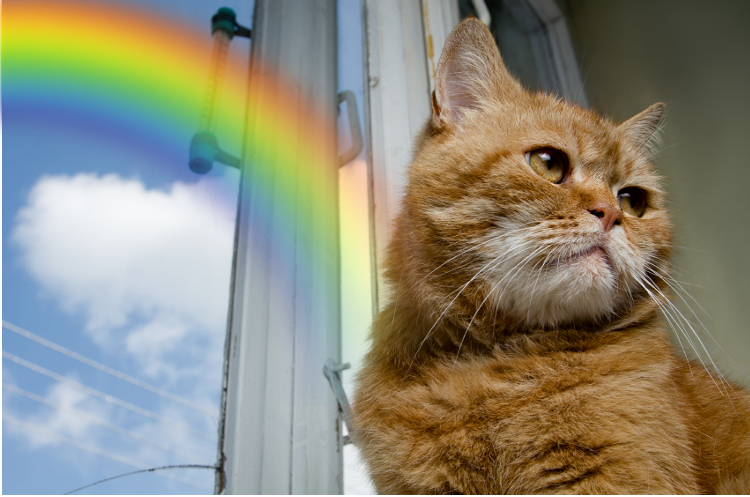My friend, Trisha, recently went through what she likes to call her ‘year of darkness.’ One tumultuous divorce, an ailing parent back East and three older pets nearing their end. Trisha clung to her chardonnay as Paul, her fifteen year old calico, jumped into her lap, dusting her black pants with a fresh layer of fur. Paul the furball had some stories of his own; he’d outsmarted coyotes, ‘wrastled’ a cockroach or two and had the ability to mold his body into pancake-like shapes when frightened, normally resulting in Trisha calling the fire department when she couldn’t get him out from under the fridge.
Trisha glanced at Paul and burst into tears. She was facing every pet-parent’s worst nightmare: whether or not to put her cat down. Poor Paul had outlasted much, but had recently been diagnosed with kidney failure. He didn’t budge, but slept with one eye open, ready to morph, mutant-like, into any shape necessary should the need arise. He had a martyr-like ability to comfort Trisha even when he was the one in pain. I topped off her chardonnay (like a good friend) and agreed to be there for her.
My mind was plagued with questions over the next few days. How does she know he’s ready to go? and Why is she dragging me into her sick euthanasia-fest? and What if Paul is really crying out for me to save him? Cats are so independent. They barely deign to live with us let alone communicate when something is wrong. HOW DOES SHE KNOW IT’S TIME??? It turns out that Paul’s activity levels had rapidly declined. Once a contributing member of the family, Paul had frequently deposited loving gifts of maimed bird carcasses and half-eaten mice on Trisha’s doorstep. Now he remained inside, trading in the wily outdoors for his favorite pillow. His appetite had also decreased. Labeled the ‘foodie kitty’ by our friends, Paul no longer bothered to even walk to his food dish, even when tempted with his favorite slivers of cured meats.
After considering her options, Trisha decided that Paul’s favorite spot under the avocado tree was where he should spend his last moments. She hired Dr. Steve, a vet who assists clients with at-home euthanasia. I asked Dr. Steve how he advises pet parents who are stuck on the issue. “It can end up being the most humane and loving thing you do for your pet,” he said. “Death is not the opposite of life. It’s a transition at the end of life… there is something we can do to take control and make this transition more peaceful.” He added that learning about the process, talking openly and planning things in advance can assist with the grief process.
After some time beneath the avocado tree we carried Paul inside and laid him on the living room floor, allowing his four-legged family members to see him for the last time. “Animals have a more pragmatic opinion of death than we do and it helps to give them closure,” Dr. Steve said. Two years later Paul’s ashes hold a prominent place on Trisha’s mantle, alongside his feline brother and sister. Trisha jokes that one day she’ll erect a family tomb and bury her animals with her, just like an Egyptian Pharaoh. It’s not a crazy thought; they’re with us through major parts of our lives. Why can’t they usher us into the next?






